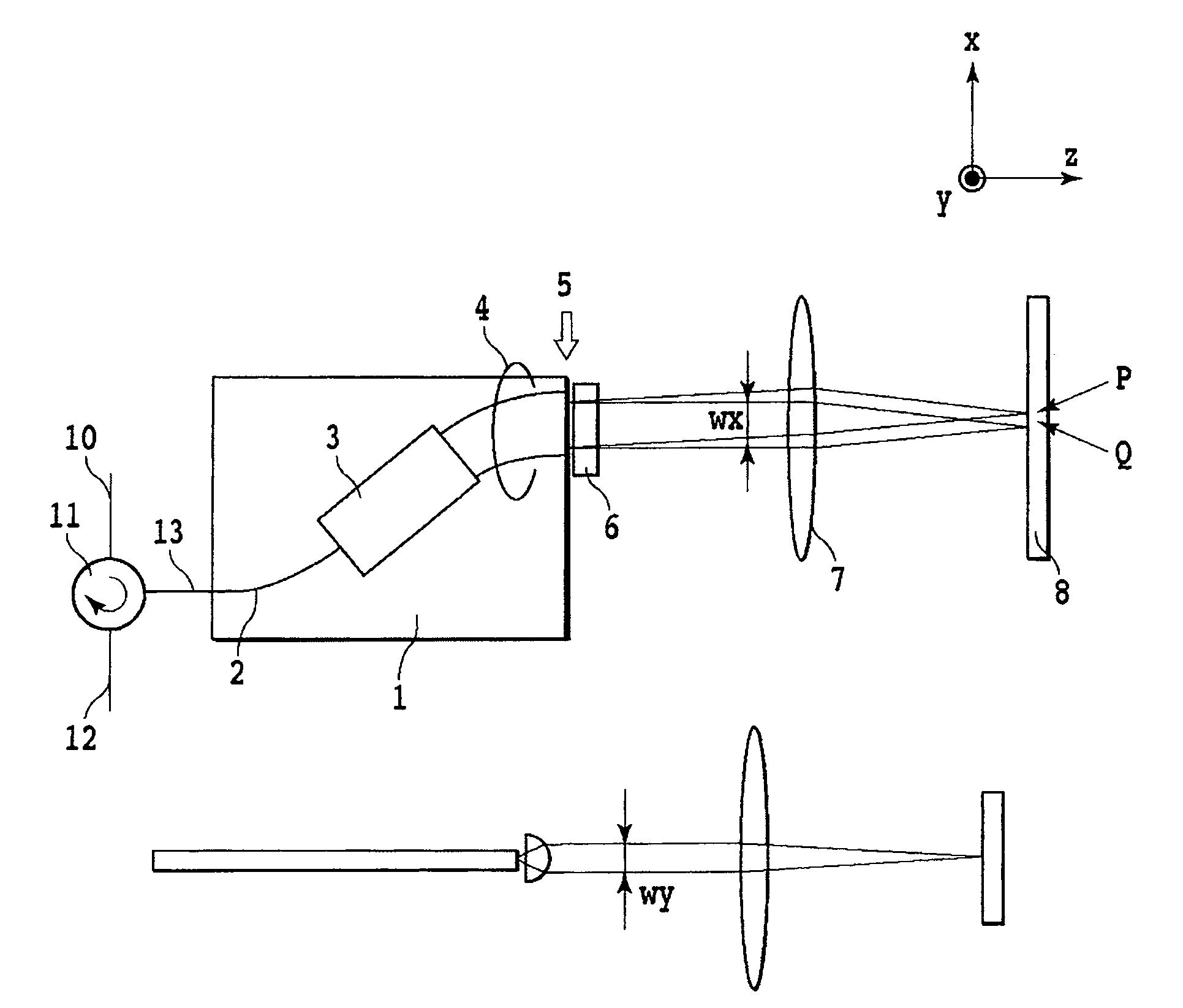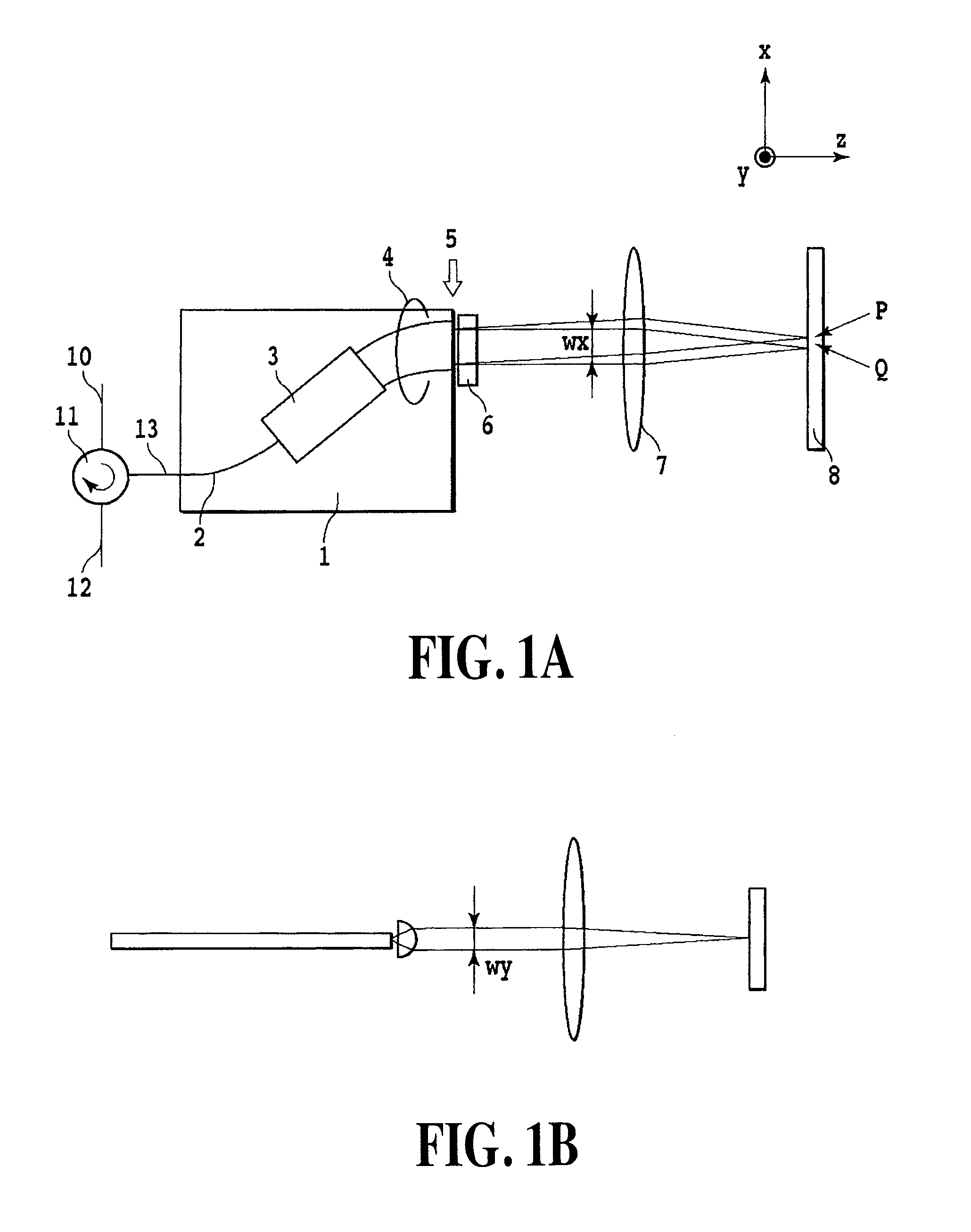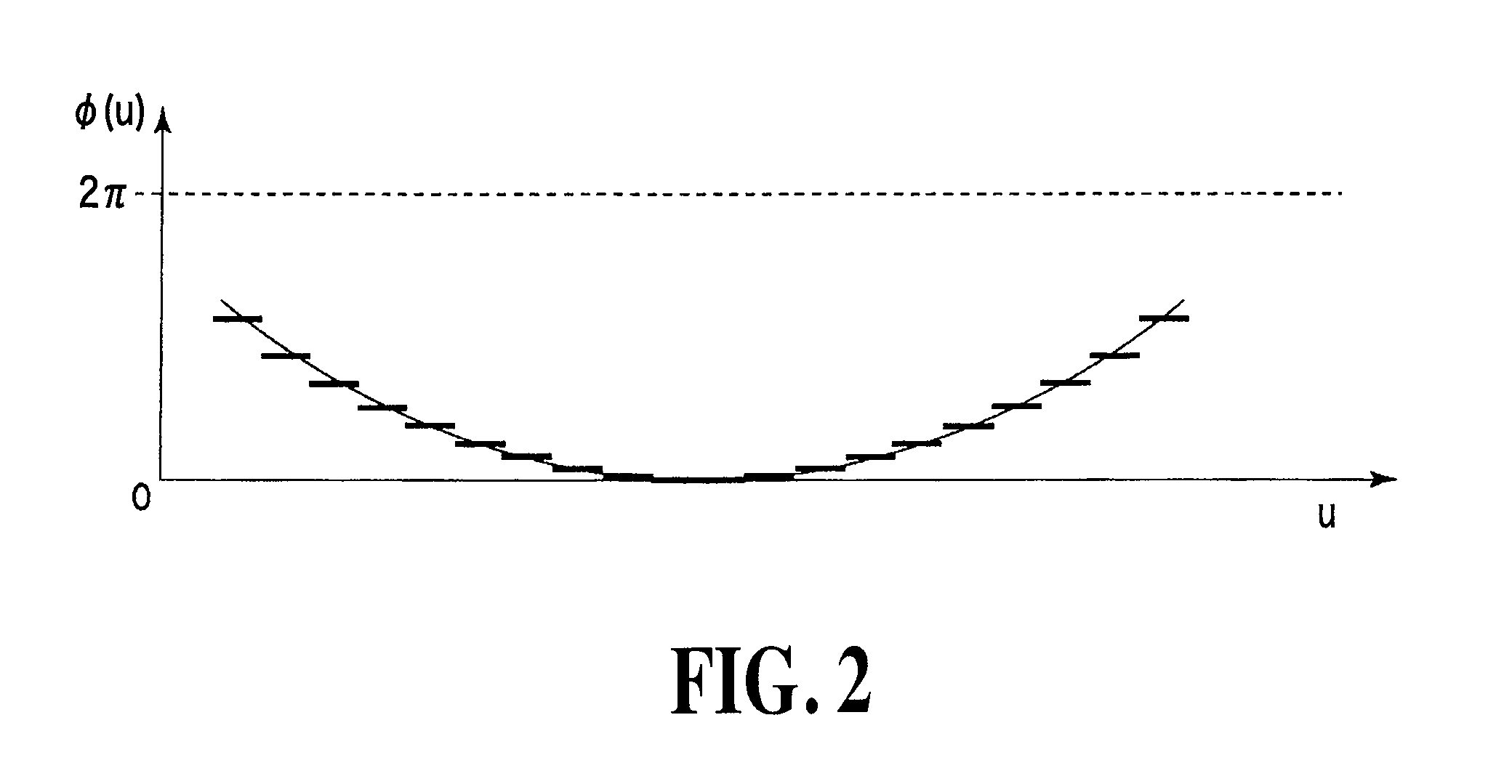Dispersion compensator
a compensator and dispersion technology, applied in multiplex communication, instruments, optical elements, etc., can solve the problems of coupling loss, difficult to set a specified dispersion value to a desired arbitrary value, and insatisfactory, so as to facilitate the maintenance of the network system and the optical signal processor, reduce size, and simple free space optical system
- Summary
- Abstract
- Description
- Claims
- Application Information
AI Technical Summary
Benefits of technology
Problems solved by technology
Method used
Image
Examples
first embodiment
[0069]FIGS. 1A and 1B are views illustrating the configuration of a dispersion compensator according to a first embodiment of the present invention. FIG. 1A is a top view (an x-z plane) of an AWG substrate, while FIG. 1B is a side view (a y-z plane) thereof. The dispersion compensator according to the present invention is made up of a circulator 11 for input / output of optical signals; and a free space optical system which includes an arrayed-waveguide grating 1 (hereinafter referred to as AWG), a cylindrical lens 6, a focusing lens 7, and a spatial light modulator 8. The dispersion compensator includes a so-called reflective optical signal processing system in which an input optical signal is reflected upon the spatial light modulator 8 and the optical signal is delivered via the same AWG 1. The spatial light modulator implements the dispersion compensator unique to the present invention.
[0070]In more detail, an optical signal coming through an input fiber 10 is incident upon an inp...
second embodiment
[0087]FIG. 6 is a view illustrating the configuration of the dispersion compensator according to a second embodiment of the present invention. This dispersion compensator is also of the same reflection type as that of the first embodiment, but different therefrom in that a bulk-type diffraction grating 15 is further included, and an optical signal is spatially dispersed using a bulk-type diffraction grating. Furthermore, a key feature of this embodiment lies in that when viewed through an optical path, the AWG and the dispersion plane of the bulk-type diffraction grating are orthogonal to each other. Now, the differences between the second and first embodiments will be described in detail below.
[0088]As with the first embodiment, an optical signal supplied through the input fiber 10 is incident upon the input waveguide 2 of the AWG 1 via the circulator 11 and the coupling fiber 13. The optical signal incident upon the input waveguide 2 propagates to the arrayed waveguide 4 via the s...
third embodiment
[0106]Now, description will be made for a dispersion compensator, according to an embodiment with pixels disposed in a different manner, which has a combination of the arrayed-waveguide grating 1 and the bulk-type diffraction grating 15 as with the second embodiment. In the second embodiment, as shown in Equation (5), the ellipse radius wv of a focusing spot in the direction of v was less than the pixel width wSLMv of the spatial light modulator. However, conversely, it is also possible to make the ellipse radius wv of the focusing spot in the direction of v greater than the pixel width wSLMv as shown in the following equation;
wSLMv<<wv Equation (6).
[0107]FIG. 9 is a view illustrating the relationship between the focusing spot size and the pixel on the spatial light modulator of a dispersion compensator according to a third embodiment. In FIG. 9, pixels are configured such that the amount of shift dv of the focusing spot in the direction of v per one optical signal channel du...
PUM
| Property | Measurement | Unit |
|---|---|---|
| size | aaaaa | aaaaa |
| width wSLM | aaaaa | aaaaa |
| width wSLM | aaaaa | aaaaa |
Abstract
Description
Claims
Application Information
 Login to View More
Login to View More - R&D
- Intellectual Property
- Life Sciences
- Materials
- Tech Scout
- Unparalleled Data Quality
- Higher Quality Content
- 60% Fewer Hallucinations
Browse by: Latest US Patents, China's latest patents, Technical Efficacy Thesaurus, Application Domain, Technology Topic, Popular Technical Reports.
© 2025 PatSnap. All rights reserved.Legal|Privacy policy|Modern Slavery Act Transparency Statement|Sitemap|About US| Contact US: help@patsnap.com



